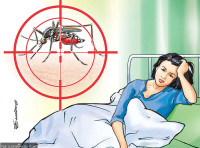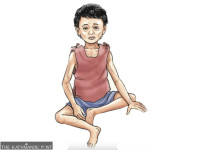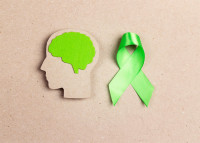Health
How you can reduce the risk of getting lung cancer
If you have never smoked, don’t start smoking. If you do, you should try to quit.
Dr Rakshya Pandey
Lung cancer is the most common cancer and the leading cause of cancer deaths worldwide. An estimated 1.76 million deaths were caused by lung cancer worldwide in 2018 alone.
In Nepal, according to WHO cancer data for 2018, lung cancer is the most common type of cancer in men and the second most common cancer in women, after cervical cancer. Here is what you need to know about the disease.
What is lung cancer?
Lung cancer is a condition when normal cells in the lungs change to abnormal cells and start growing out of control.
What increases the risk of developing lung cancer?
Cigarette smoking poses the number one risk for developing lung cancer. Smokers have 10 to 30 times more risk of developing lung cancer than non-smokers. The risk of developing lung cancer grows with increase in amount of tobacco smoked and the number of years you have smoked. Quitting smoking can reduce the risk for lung cancer regardless of how many years a person has smoked. The risk of lung cancer goes down within 5 to 10 years of quitting smoking; however, the risk remains higher than those who have never smoked. Second-hand smoking or passive smoking is also a risk factor for lung cancer.
Other risk factors for lung cancer include chronic lung diseases like chronic obstructive pulmonary disease, lung fibrosis, exposure to substances like asbestos, diesel exhaust and air pollution, and genetic predisposition where cancer runs in the family.
Non-smokers may also develop lung cancer but it is less common. Sometimes no risk factor is identified in patients. The risk of developing lung cancer increases with age.
Are there different types of lung cancer?
There are two main types of lung cancer.
Non-small cell lung cancer (NSCLC): Around 80-85 percent of patients with lung cancer have NSCLC. The most common forms of NSCLC are adenocarcinoma and squamous cell carcinoma.
Small cell lung cancer (SCLC): Around 10-15 percent of people with lung cancer have SCLC. Small cell cancer grows more rapidly than non-small cell lung cancer, therefore, it may have often spread outside the lungs when a diagnosis is made.
There are other types of lung cancer that grow slowly and are less aggressive, for example, carcinoid tumour.
What are the symptoms of lung cancer?
Symptoms may be different in different patients. Some patients may not have any symptoms and cancer may be identified when a chest x-ray is done for some other reason. Some of the common symptoms are: coughs lasting for long periods, blood in sputum, difficulty breathing, noisy breathing or wheezing, change in voice, swelling of face, a lump in the neck, pain in the chest or arms. There may or may not be weight loss or decrease in appetite.
How is lung cancer diagnosed?
Lung cancer may first be suspected from clinical history and physical findings or an abnormal chest x-ray which may show abnormal spots or water collection.
CT scan of the lungs is often done to look at the lungs in more detail and to find the size and exact location of cancer cells. CT scan will also help to look for glands (lymph nodes) in the chest.
Once the tumour is located in a CT scan, a biopsy of the tumour needs to be done to confirm the diagnosis of cancer. Biopsy from the tumour can also be done by ultrasound or CT guided technique in which a needle is passed through the skin into the tumour and also by surgery. If glands are present in the neck or armpit, that can also be biopsied to reach the diagnosis.
CT scan or MRI of other parts of the body or PET CT scan of the body, which is a more specialised form of CT scan, may be done to look for spread of cancer outside the lungs to other parts of the body.
What is staging of cancer?
Staging of cancer means checking how far the cancer has grown and if it has spread outside the lung. In Non-small Cell Lung Cancer (NSCLC), staging is done by looking at tumour size, lymph glands and tumour spread outside the lungs. There are four stages of cancer, stage 1 being early stage and stage 4 being advanced stage cancer, which means the cancer has spread outside the lungs. In Small Cell Lung Cancer (SCLC), staging is done depending on whether the tumour is within or outside the lungs.
How does the staging of cancer help?
Staging of cancer will help plan the cancer treatment and also help evaluate the prognosis or outcome of cancer. Seventy percent of patients diagnosed at stage 1 can survive for more than five years; only five percent of those diagnosed at stage 4 survive. This also highlights the importance of diagnosing and treating cancer as early as possible.
What is the treatment of lung cancer?
Treatment of lung cancer depends on the type and stage of cancer. Once the diagnosis of lung cancer is confirmed, the patient is referred to a cancer specialist. Cancer treatment is then planned according to the type of lung cancer, cancer stage, patient’s condition and patient’s preference. Broadly, treatment options include chemotherapy, radiation and surgery.
For early-stage lung cancer, surgery may give the best outcome. Radiotherapy can also be given in early-stage lung cancer for those who cannot undergo or don’t want surgery. For more advanced stages like 3 and 4, chemotherapy and radiotherapy might be the options depending on the patient’s condition. Newer medicines like targeted therapy have been developed for certain types of cancers in recent years.
What if the treatments mentioned above are not suitable for a patient?
If a patient is not suitable for any form of cancer-specific treatment, either due to very advanced disease, frailty or patient’s preference, it doesn’t mean the patient has to suffer. A lot can be done to help a cancer patient with symptom relief which is called palliative or best supportive treatment. The doctor can give medicines for symptoms like cough, breathlessness, pain etc. Palliative care will not cure or treat the cancer, but it certainly can make the patients comfortable with their symptoms. There are hospice centres in Nepal like Hospice Nepal and Binaytara Foundation that provide holistic care for cancer patients who are on supportive treatment.
Supportive care can be provided at any stage of cancer from diagnosis onwards.
How can you reduce your risk of getting lung cancer?
There is no sure way of preventing lung cancer but you can reduce your risk of getting one. If you have never smoked, don’t start smoking. Risk of getting lung cancer is much higher in smokers than non-smokers. If you smoke, you must quit smoking. Avoid secondhand or passive smoking. Smokers who have no intention of quitting should avoid smoking indoors to risk others. Avoid cancer-causing substances like chemicals, asbestos at home or work. Eat a healthy diet and exercise regularly.
For patients who have been diagnosed with lung cancer, keeping active, exercising when possible, eating a healthy nutritious diet can help them feel better. Engage with your doctor and express your feelings/views regarding your symptoms and treatment plan.
It may seem like your life has ended when you are diagnosed with cancer and you may feel alone and depressed, but talking about how you feel physically and emotionally can help to decrease anxiety and help find the support you need in friends and family. There is a lot that can be done to improve your quality of life even though lung cancer is not curable.
Pandey is a senior consultant for respiratory and critical care medicine at the Hospital for Advanced Medicine and Surgery (HAMS).




 11.74°C Kathmandu
11.74°C Kathmandu














